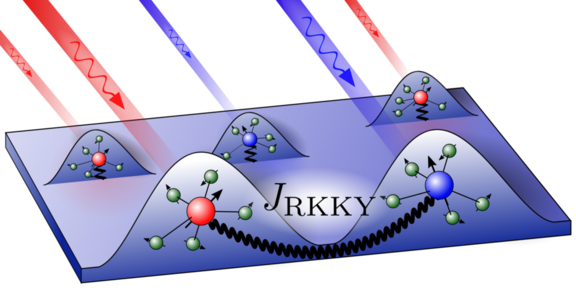Question of interaction between spins in semiconductor quantum dot ensembles solved
- News
- Research

Quantum dot ensembles can be simplified as a two-dimensional surface on which dots of different sizes are distributed at irregular intervals. One electron spin - the intrinsic angular momentum of electrons - is localized in each of these dots. The distances between them are so large that actually no interaction between the individual spins should take place. Experiments with laser pulses, however, have shown that the spins react to lasers with different frequencies, so there is indeed an interaction. "The research group of Prof. Manfred Bayer from the Faculty of Physics was already able to demonstrate experimentally in 2011 that the spins do interact with each other. For possible applications, however, it is essential to also understand the mechanism behind the interaction," says Prof. Frithjof Anders.
Results successfully reproduced
The team therefore created a theoretical model, constrained it using realistic basic assumptions and chose the parameters in such a way that the experimental results could be reproduced. "We were ultimately able to establish very good agreement between the experimental and theoretical results," reports Frederik Vonhoff. With the help of the model, it is now possible to predict how the interactions can be specifically influenced and adapted for certain applications. The findings could help improve the integration of quantum information processing hardware into standard computer hardware in the future.
The research was conducted as part of Collaborative Research Center/Transregio 160, "Coherent Manipulation of Interacting Spin Excitations in Tailored Semiconductors." From the team of Prof. Frithjof Anders, Frederik Vonhoff and Andreas Fischer as well as Kira Deltenre were significantly involved in the publication, which was recently published in the renowned journal Physical Review Letters.
Contact for queries:

![Band structure of 2D semimetal based on HgTe quantum well. Experimental points are obtained from the analysis of the cyclotron resonance in the quasi-classical approximation. Solid lines are predictions of the kp theory with no free parameters. Splitting of the conduction (e1,2) and valence (h1) band is due to the quantum confinement. [J. Gospodaric, AP, et al., PRB 104, 115307].](/storages/physik/_processed_/b/5/csm_Kolloquium_Pimenov_0fa7761647.png)








